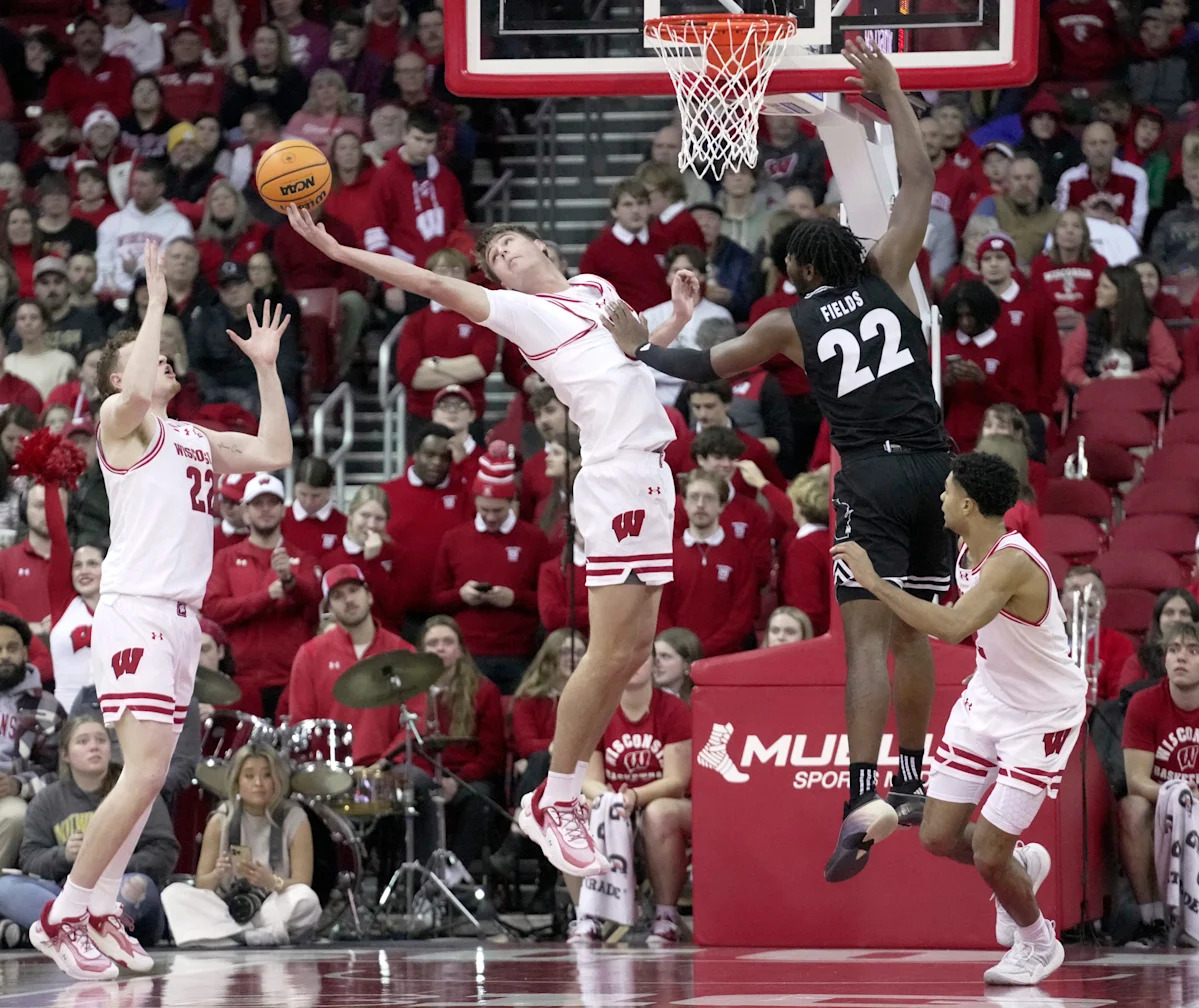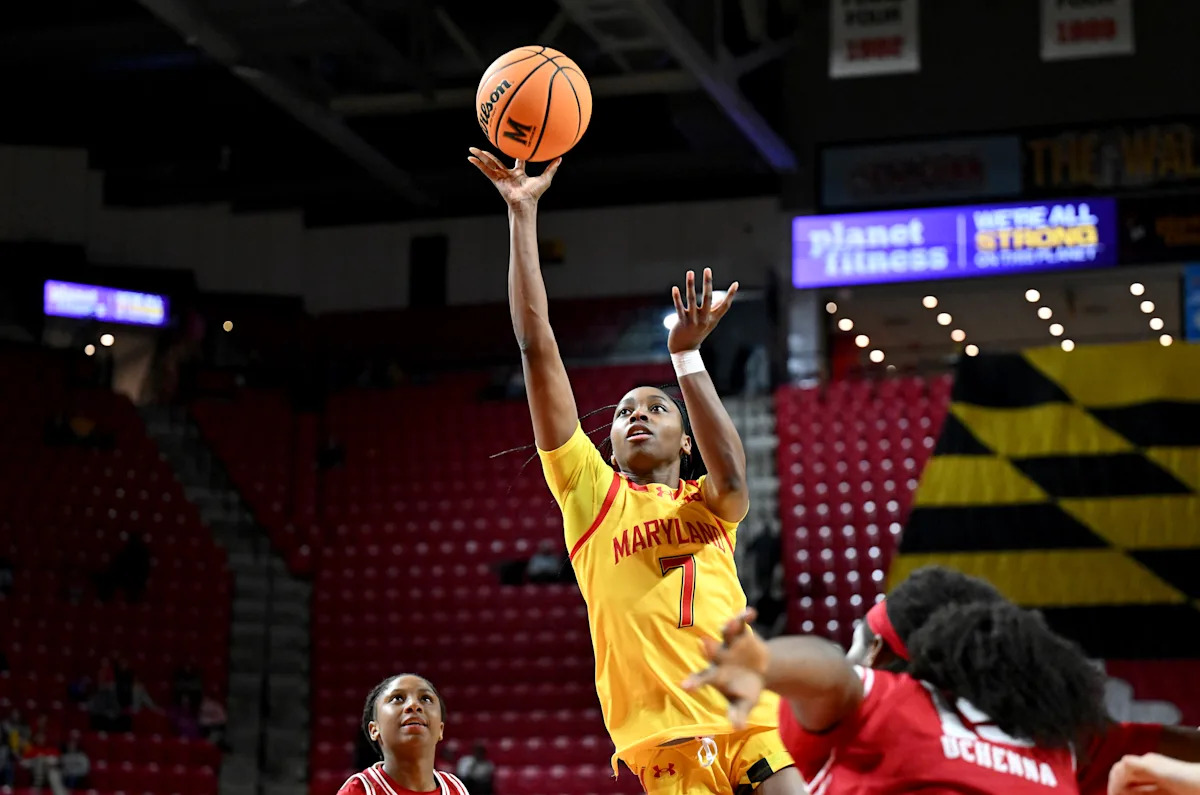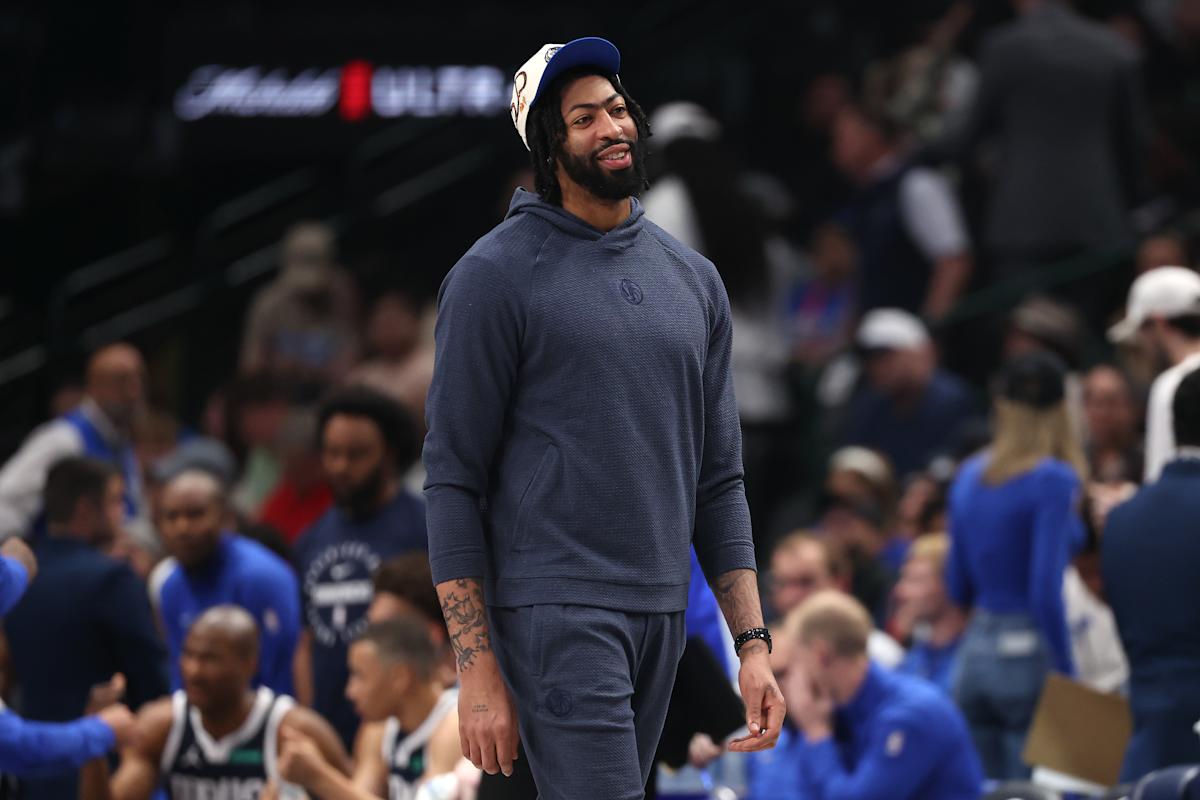CHAPEL HILL, N.C. — Where does North Carolina stand entering year five of the Hubert Davis era?
Davis’ highs align with UNC’s annual expectations: a surprise national championship game appearance in his debut season, followed by a No. 1 seed and ACC regular-season title in 2024. But the lows are low: missing the NCAA Tournament in his second season and being the last team into the field last season.
Davis’ job this season, then? Flattening that roller coaster, for good.
“There is a pressure and expectation for us to be good,” Davis said this month. “But that pressure and that expectation for us to be good is no different than any other year. The standard is at the highest here.”
That’s why this offseason, Davis and his staff orchestrated the most thorough roster overhaul of his tenure. Other than senior guard Seth Trimble, who started 18 games last season, UNC doesn’t return a single other significant contributor. Instead, Davis welcomed a number of high-profile transfers, added a few impact freshmen and even went to the international ranks to round out a roster that should be among the ACC’s best.
Let’s take a closer look at the 11 expected Tar Heels contributors. (High point transfer Ivan Matlekovic, who played 30 total minutes as a freshman, and freshman Isaiah Denis should be de facto practice players.)
Seth Trimble
2024-25: 11.6 ppg, 5 rpg, 1.3 apg
A return to Trimble’s natural backcourt spot will serve him well. Like many Tar Heels last season, Trimble played out of position due to a lack of frontcourt size, often finding himself as a small-ball wing despite standing 6 feet 3 and 200 pounds.
And while the first four-year player of the Davis era will undoubtedly be one of UNC’s centerpieces this season, how he’ll fill that role is difficult to forecast. Trimble’s hops and first step, especially, are that of a future NBA player… but he’s yet to put all the pieces together through three seasons. Per CBB Analytics, Trimble shot below the national average from every spot on the court last season, but he also posted UNC’s lowest turnover rate and best free-throw rate. He was hyper-efficient in iso situations and transition, per Synergy — above the 85th percentile nationally in both — but struggled in spot-up and pick-and-roll scenarios. Put together, it’s a confusing picture.
Trimble hasn’t shown the consistent playmaking or shooting acumen to be relied upon as a lone point guard, but he needs to have the ball in his hands to unlock his best offense: straight-line drives and an uncanny ability to collapse defenses. (Shooters like Kyan Evans around him should provide wider lanes to work with.) Trimble won’t suddenly morph into a knockdown 3-point shooter or consistent 20 point-per-game scorer, but he’ll easily still be one of UNC’s top three players — and with more consistency, perhaps a star.
Zayden High
2023-24: 4.5 mpg
High wasn’t on UNC’s roster last season while serving a suspension for violating North Carolina’s campus policy on sexual exploitation, according to a May report from the Raleigh News & Observer. But being back on the team doesn’t guarantee High minutes.
That’s because a year after UNC had no frontcourt depth, it now has plenty. Top-10 freshman Caleb Wilson will start at power forward, and even if Jarin Stevenson starts next to him on the wing, the 6-foot-10 Alabama transfer is still going to see plenty of time at the four. There’s also Henri Veesaar, the Arizona 7-footer who Davis landed as his new stud center. Considering High didn’t have a role before such a long layoff, it’s hard to envision the 6-foot-10, 230-pounder earning more than spot minutes behind that trio.
James Brown
2024-25: 2.9 mpg
Brown got into 18 games as a freshman — never for more than six minutes — and is probably best known at this point for his offensive putback right before halftime in an eventual loss to Kansas. But this season, the former four-star recruit should see more playing time, strictly because of UNC’s void behind Veesaar. In limited time, Brown proved to be an effective rebounder and someone whose hustle translated to easy offensive looks. But given his struggles away from the rim, especially his propensity for fouling, it’s hard to know how much Davis will be able to rely on the 6-foot-10, 240-pounder. One of he or High is going to have to back Veesaar up, though.
Kyan Evans
2024-25: 10.6 ppg, 3.1 apg, 2.9 rpg (at Colorado State)
North Carolina sorely needed a point guard with RJ Davis and Elliot Cadeau moving on — and in Evans, it found an ideal one. Not only has the 6-foot-2, 175-pounder already been the primary ballhandler for an NCAA Tournament team, but he was one of the most prolific shooters in the nation last season. Per KenPom, Evans’ 3-point percentage of 44.6 percent was top-25 nationally — on 4.4 attempts per game, so healthy volume — while his true shooting percentage of 64.5 percent was also top-50 nationally. But Evans wasn’t just good from deep; he also shot 85.2 percent from the free-throw line, and according to CBB Analytics, 75 percent at the rim — which is 12.7 percent better than the national average.
“I’m just a guy (who) you can’t leave any space. No space,” Evans self-scouted. The film, and his comfort pulling from the logo decal, shows he ain’t wrong.
It’s probably unfair to expect Evans to shoot as well as he did last season, but even settling in at 40 percent from 3 would do wonders for the Tar Heels’ spacing. Between that and asking Evans to also be one of UNC’s top creators, Davis is banking hard on the CSU transfer being a top ACC point guard.
Henri Veesaar
2024-25: 9.4 ppg, 5 rpg, 1.3 apg (at Arizona)
When Veesaar committed to UNC, one NBA scout texted me: “That’s a future pro.” For good reason: The 7-footer should be the best defensive big man of Davis’ tenure. As you can see, Veesaar’s timing and ability to cover ground quickly is rare for someone his size.
If there’s anything about Veesaar’s defense that isn’t rock solid, it’s his rebounding — specifically his release after boxing out his man. But Veesaar acknowledged that’s been a point of emphasis with UNC big man coach Sean May. Regardless, between Veesaar and Wilson, UNC should have one of the best (and biggest) defensive frontcourts in the country — better than two seasons ago, even, when Armando Bacot and Harrison Ingram propelled UNC to a top-10 defensive finish.
Offensively, Veesaar will be a roller in ball-screen scenarios with Trimble and Evans, a screener for shooters like Evans and Jonathan Powell and an offensive rebounder in line with past Tar Heel greats. The bigger questions are, if he can shoot it, and will Davis let him? Veesaar shot 32.7 percent from 3 last season on just under 50 total attempts, which is serviceable — but he made two of his 16 tries out of pick-and-pops, per Synergy. He’s more effective lifting to the top of the key, especially when his teammates are engaged in a separate ball-screen action. Using the Estonian in that way makes a lot of sense, but Davis has never had a center with Veesaar’s shooting potential.
Jarin Stevenson
2024-25: 5.4 ppg, 3.4 rpg (at Alabama)
Stevenson is the swing player who most determines the outcome of the Tar Heels’ season. After facing (and beating) UNC each of the past two seasons, the Pittsboro, N.C., native who Davis recruited heavily out of high school is finally suiting up for his hometown team. He’s shown flashes of greatness — including scoring 19 points, with five made 3s, against Clemson in the 2024 Elite Eight — but his consistency fell off last season. It sounds like UNC is at least considering starting the 6-foot-10 Stevenson on the wing, which has upside but also risk.
Stevenson’s 7-foot wingspan and ability to defend multiple positions should make for a smothering defensive trio alongside Veesaar and Wilson. Stevenson can be foul-prone, but per CBB Analytics, he had the third-best defensive on-off differential for the Tide last season. This rep against eventual first-round pick Walter Clayton Jr. showcases why; Stevenson goes from trying to deny a handoff, to realizing Clayton is cutting behind him, to recovering on the drive, to stopping on a dime, to contesting Clayton’s midrange pull-up. Not many players his size can do all that:
Offensively, Stevenson’s fit is less certain. He had Alabama’s second-worst true shooting percentage last season, per KenPom. In theory, Stevenson is a jumbo-sized 3-and-D wing — he took almost twice as many 3s (101) as 2s (53) last season — but that ignores that he shot just 30.7 percent from deep. What Stevenson needs to focus on is where he’s shooting from; per CBB Analytics, he made 36.4 percent of his top-of-the-key 3s compared with a dismal 26.3 percent from the corners. Stevenson will always offer more defensively on a game-to-game basis, but improving his shot selection can justify him starting on the wing.
Jonathan Powell
2024-25: 8.3 ppg, 3.1 rpg (at West Virginia)
The 6-foot-6 wing is the clubhouse leader for UNC’s most underrated portal pickup. Powell is just fundamentally sound and capable of impacting games in multiple ways. That starts with his 3-point shot, probably the biggest thing fans know about him. Powell made 35.2 percent of his 3s as a freshman — on 5.7 attempts per game — despite opponents knowing that was his clear go-to. He was especially lethal from the corners, where he shot 42.6 percent from deep; that’ll be a natural fit with the Tar Heels’ secondary break. Powell is also a sturdy ballhandler who, per KenPom, had a top-50 turnover rate nationally and the best amongst all high-major freshmen.
Defensively, he slides his feet well, which is why he only committed 1.9 fouls per 40 minutes, a top-200 mark nationally. Powell can be prone to falling asleep off-ball at times, but largely? His size and mobility should make him one of UNC’s better perimeter defenders from day one.
Jaydon Young
2024-25: 8.1 ppg, 1.7 rpg, 1.4 apg (at Virginia Tech)
Other than being a solid pick-and-roll scorer, the 6-foot-4 guard struggled mightily with the Hokies across the offensive gamut. Young shot just 34.7 percent overall and 29.6 percent from 3, and his advanced metrics — especially as a spot-up shooter, his primary offensive action — reflect someone whose points were largely empty calories. Defensively, Young has more upside — only conceding 2.4 fouls per 40 minutes, per KenPom — but it’s still tough to see him as more than ninth or tenth in the rotation with the two-way guys ahead of him.
Luka Bogavac
2024-25: SC Derby, Montenegro
Bogavac didn’t arrive in Chapel Hill until mid-August, but early indications are that he’ll be an instant-impact player. The 6-6, 215-pound wing averaged 14.9 points, 3.6 rebounds and 2.3 assists per game last season in the increasingly competitive ABA League.
Bogavac’s calling card is as a shooter, where he made 39.9 percent of his 3s on over five attempts per game. But Bogavac, like many European prospects, also plays with great pace and control, according to people around the program. As Veesaar said recently, Bogavac can’t be sped up, a useful habit both in pick-and-roll situations and as a handler in transition. There will naturally be an adjustment period for Bogavac adjusting to NCAA rules, physicality and spacing, but considering the recent surge of international players, largely fueled by NIL there’s no reason Bogavac can’t emerge as a top offensive option early on. He isn’t known for great foot speed and could struggle to keep up defensively with some of the faster wings in college, but that’s a trade-off Davis will take.
Caleb Wilson
2024-25: Holy Innocents Episcopal School (Ga.)
One person close to the program told me Wilson is easily the best pro prospect UNC has had in the Davis era. And while the top-10 recruit doesn’t need high usage to be high-impact, the Tar Heels will highlight the “uber talented” forward (to use his head coach’s description) early and often.
At 6-foot-10 and 215 pounds, Wilson is an ideal defensive complement to Veesaar in the frontcourt; his athleticism, combined with Veesaar’s length, should give North Carolina a level of rim protection and interior defense it hasn’t had in a decade. Wilson has a different body type than Trimble, but he’s in the running for best athlete on the team, which shows up in a variety of highlight reel blocks and alley oops.
That athleticism also leads to easy scores, especially on offensive putbacks and in transition. But what about Wilson’s skill? Dating back to his grassroots days, I’ve always thought Wilson was a solid (if not underrated) passer, and especially for his size, his ballhandling ability — even secondarily alongside the likes of Trimble and Evans — is an obvious asset. I don’t know that I’d trust Wilson as a true outside shooter yet, but even if that doesn’t materialize this season, the Georgia native can still have a profound impact. Plus, it sounds like the freshman is already emerging as one of UNC’s emotional leaders. “He’s young and confident,” Evans said, “and we love him for that.”
Derek Dixon
2024-25: Gonzaga College High School (Washington, DC)
At 6-foot-5 and 200 pounds, Dixon has ideal size for a combo guard, and his temperament on the floor is what you want in a lead guard. Dixon is rarely rattled, knows how to make the smart play and expertly straddles the line between creating for others and calling his own number. He doesn’t have tremendous athleticism, but his basketball IQ is obvious and should serve him well in earning reserve backcourt minutes as a freshman.
Dixon is a lights-out shooter in the midrange and from the free-throw line, and more than capable from 3. He won’t blow by high-major defenders, but can dissect ball-screen situations and make the right read. Those same tendencies show up on D, where Dixon understands proper positioning and help. Add it up, and you have someone who embodies most of what Davis preaches as a coach — which should translate to early playing time.
(Top photo: Greg Fiume / Getty Images)

























